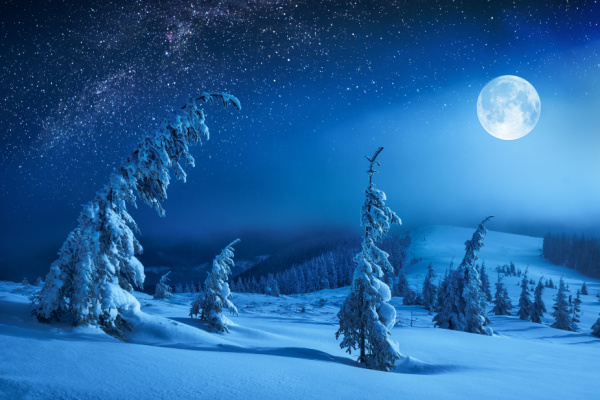There’s more snow expected in February, a snow moon, that is. The second full moon of the year will reach its peak on Wednesday at 8:53 p.m. EDT, according to Space.com. Given the amount of snowfall in February, this full moon is appropriately called the snow moon.
Stargazers are encouraged to look for the moon on the evenings of Feb. 11 and 13 as well, because the moon will still appear full, according to EarthSky.org. The moon will rise above the eastern horizon around sunset and reach the highest point in the sky at midnight.
The February full moon is nicknamed for the heavy snow events that typically occur during the month of February. Other nicknames for this month’s moons include the Groundhog Moon, the Hungry Moon, the Bald Eagle Moon and the Raccoon Moon. December and January receive a lot of snow, but February is one of the snowiest months for some regions in the U.S., according to The Weather Channel.
According to astronomy.com, it all starts a few days before, when the prominent horseshoe-shaped crater Eddington lies near the day-night terminator line, due west of blazing Aristarchus. Eddington’s southern half lies buried under a sea of lava. A neat wrinkle ridge links two nearby sharp-edged craters.
Then the moon gives us our first view of Einstein, west and a little south of Eddington. Slightly bigger, a respectable 125 miles across, Einstein is a battered ring with a secondary crater in its middle. But it won’t look like a typical crater this night because it lies edge-on to our line of sight. Look right on the limb for three bumps, which are a profile of the crater rim with its central peak. The outer two high spots are a bit farther apart than Eddington’s width.
With each successive night, the Moon’s western limb appears to roll slightly toward us, transforming the view from edge-on to a shallow angle, so that by the 9th, Einstein’s inner crater is noticeable, surrounded by some darker lava that flooded the outer crater’s interior. Use a filter to cut the glare, such as a cross-polarized pair that will allow you to dial in the amount of reduction. Alternatively, a deep-blue filter, sunglasses, or increasing the magnification are good ways of managing the light. The sequence nearly repeats next month, starting March 5th.
The moon takes about 29½ days to revolve around the Earth, which is called a lunar cycle, according to the Lunar and Planetary Institute. As the moon moves through its various stages, it experiences several phases of partial light. These range from a banana-shaped crescent moon, a D-shaped quarter moon and a nearly full gibbous moon. Each phase is named according to where it falls in the 29½-day cycle, whether it is waxing (increasing) or waning (shrinking).
—
Photo Credit: Vitalii Bashkatov / Shutterstock.com
